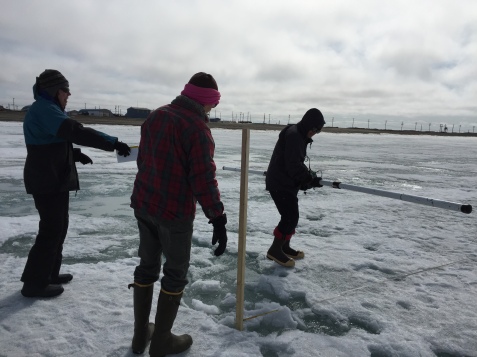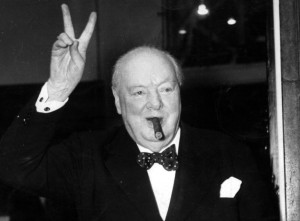Our last official station of on-ice activities included albedo measurements with Don Perovich. The skies were clear and sunny with only a slight wind. Balmy compared to the previous day!
“It feels like Seattle,” Jinlun cheerfully commented as we walked onto the ice.
Looking up at the blue skies and coastline, I admitted that it *almost* felt like a summer day by the beach. But I pointed out that we were wearing quite a lot of winter-weather gear. Jinlun paused. Indeed we were! We laughed and continued on, enjoying the fine weather.
Yellow Team set up another straight line, along which we made albedo measurements every 5 m. One person slipped on a backpack with the ASD device inside and slung a tray around his/her neck to carry the laptop. A second person maneuvered the cosine collector arm and cued their partner to take a measure with the ASD when the arm was level. Following closely on their heels was another person who took notes on surface conditions and documented each measured point photographically.
When we finished the line of measurements, some scuttling clouds had rolled in. The clouds, we learned, could introduce some more noise into the measurements. Fortunately, we had finished. We now had to download the data and do some analysis!











































